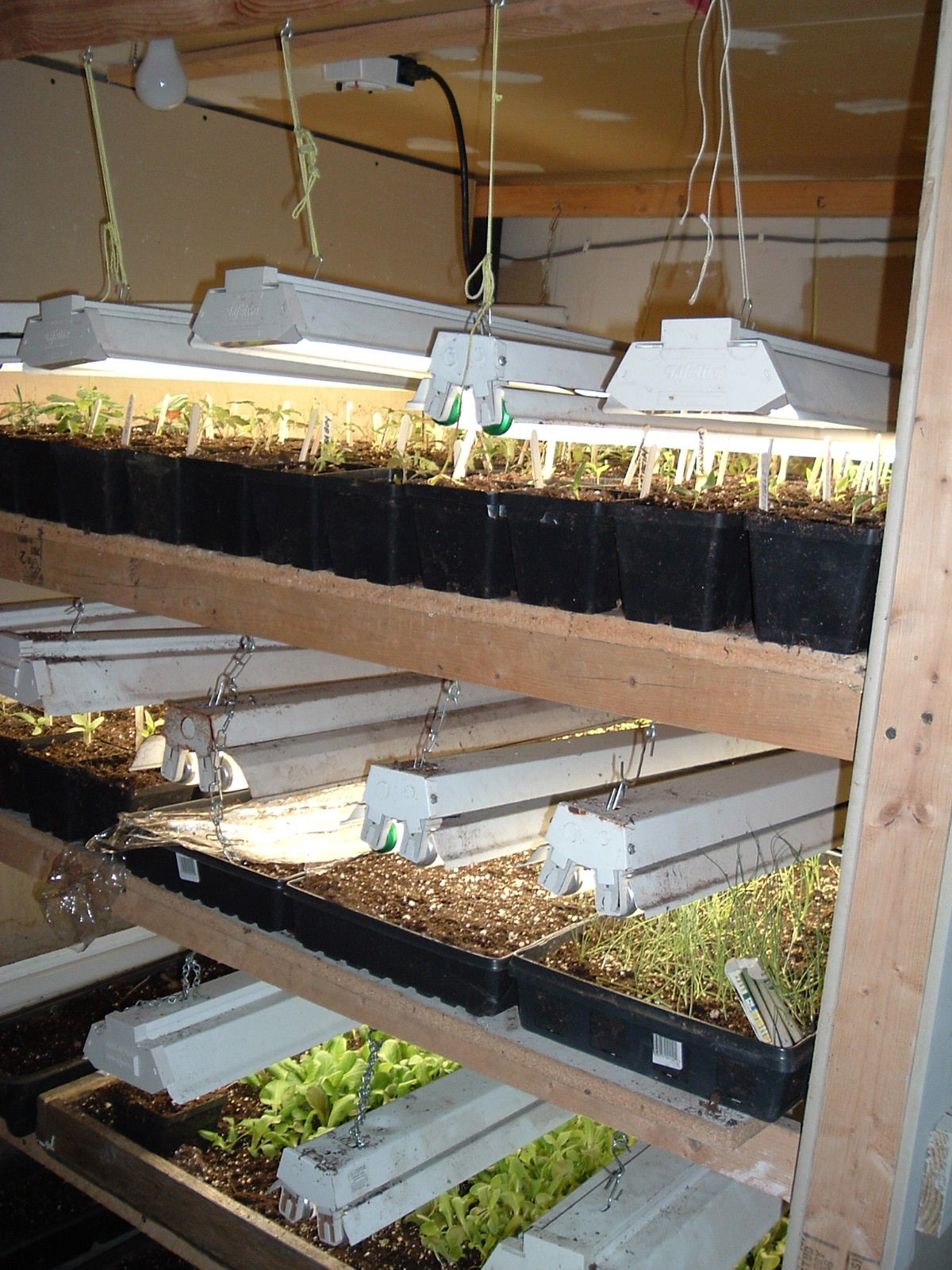
As a greenhouse owner, to get the best growth from your plants, you often need to supplement the light that they need, especially during the winter months. In general, your greenhouse gets plenty of natural light from the sun, but there are times when you may want to keep plants growing into fall or start new plants in spring before last frost. Or, perhaps the most convenient place to germinate seeds is in a dark area of your greenhouse (under a bench, perhaps). Or maybe you want to provide the best lighting to get a certain plant to get less leggy or another one to bloom. That’s where adding the right kind of artificial lighting can help.
First, it’s useful to know a bit about what light is and how plants use it. Light is just one small part of what’s called the electromagnetic spectrum of radiation. We humans can see only certain wavelengths of light – those measuring between about 400 nanometers (the violet/blue end of our visible spectrum) and 700 nanometers (our visible spectrum’s red end). Using both blue and red light in this range, the chlorophyll in plants turns light energy into chemical energy by photosynthesis. But plants use light not just to feed themselves through photosynthesis. Light also regulates plant growth and development. Here, too, much of the light that plants use is in the blue and red parts of the human visible spectrum. In addition, they also use light beyond what humans can see, both on the ultraviolet side of the light spectrum and on the infrared side.
Light in the blue/violet range has important effects on plant development. For example, certain receptors sensitive to blue/violet light are responsible for inhibiting stem elongation in seedlings, preventing them from growing very long and gangly. Other receptors for blue/violet light are responsible for phototropism, the ability of plants to orient toward or away from a light source. The same receptors regulate the opening of stomata on leaves, allowing the exchange of gases and the release of water vapor. Some leaves can actually swell up with water if they receive insufficient blue/violet light.

The ways in which red light affects plant development are equally important. The red end of the spectrum is the warm end. If you want more flowers and fruit you will need to provide lighting at this end of the color spectrum. Ideally, you want your plants to grow fairly large before they set flowers or fruit, thus you should use lights toward the red end near the end of the plant’s growth cycle to bring it into flower and help it to set fruit.
All this tells us that the artificial lights you use to help your greenhouse plants to grow should generally produce a moderately broad range of wavelengths, but the wavelengths should be specifically suited to your plants. If you require strong leaf growth, you should use lighting toward the blue end of the spectrum. If you want to force flowers, lighting toward the red end of the spectrum will help you do that.
What type of lighting provides the wavelength you need? Incandescent lights tend toward the red end of the spectrum, but these bulbs get quite hot and need to be placed far from the plants which reduces their effectiveness. Fluorescent cool white bulbs or tubes tend toward the blue end of the spectrum and are good for green growth while warm white bulbs or tubes tend to be more red. I put one cool white and one warm white tube in each fixture to provide the best performance. However, Fluorescent tubes tend to lose performance and need to be replaced every three to four years. Regular white LED lights tend toward the blue end of the spectrum and promote leafy growth, but you can buy special plant LED lights that have both red and blue LEDs made specially for plants.

A light’s power is measured in lumens or foot-candles and at a minimum you should have between 500 and 1000 foot-candles of light on your plants. (A foot-candle is a light source that is one-foot from the surface over one square foot.) That works out to about 20 watts per square foot. So, if you use 4’ fluorescent tubes at 20 watts each shining over a 1’ wide area (4 square feet), you will need to place your tubes close to the plants to get 20 watts per square foot. I put my tubes just a few inches above the leaves and raise the fixtures as the plants grow. If you place your lights too high your plants will grow leggy as they strain toward the lights.
How long should you have your lights on? I start seeds using 8 hours of lighting per day. Established plants can have up to 12, or even 14 hours per day, but plants do require a period of darkness so you will need to turn your lights off at night. Make sure you know what your plants need to get the best growth.


